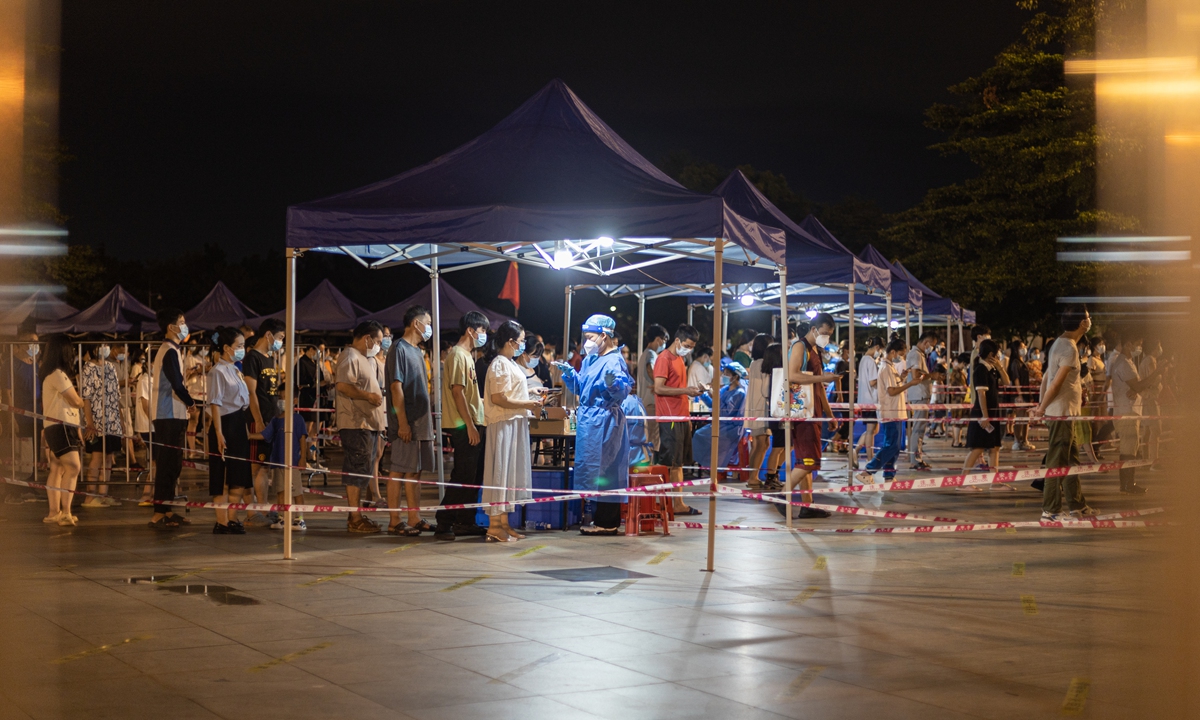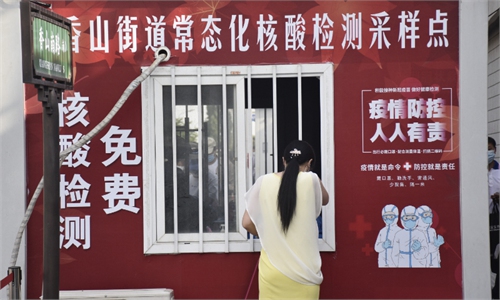Guangzhou reports 2 infections of Omicron variant BA.2.76 with existing risks of transmission at community level

Residents line up to take nucleic acid tests in Guangzhou, South China's Guangdong Province, on August 6, 2022. Photo: IC
Guangzhou in South China's Guangdong Province reported on Wednesday two new local infections of COVID-19, with the virus gene sequencing results turning out to be Omicron variant BA.2.76, which was highly likely transmitted from personnel from other provinces. Experts believe there exists a certain risk of transmission at community level and the possibility of other infections cannot be ruled out.
The two infections, a couple, living in Yuexiu district tested positive for COVID-19 when they visited the fever clinic at the Guangdong Second Traditional Chinese Medicine Hospital on the early morning of Tuesday, Zhang Yi, spokesperson from the Guangzhou Municipal Health Commission, announced during a press briefing on Wednesday morning.
They were immediately transferred to the Fourth Affiliated Hospital of Guangzhou Medical University and were confirmed as minor cases and are currently in stable condition.
The virus gene sequencing results of the patients showed that they contracted Omicron BA.2.76 subvariant which experts decided based on epidemiological investigation that it is very likely they contracted the virus from personnel from other province who stayed and transferred to other places via Guangzhou.
Since the infections had a wide range of activities, and itinerary of their movements involved multiple districts, experts have determined that there is a certain risk of transmission in communities, and the possibility of the other infections cannot be ruled out.
The Omicron BA.2.76 subvariant has been determined to have caused the latest flare-up in Lhasa city in Xizang (Tibet) Autonomous Region since August 7, which have spilled over to several cities across the nation including Shanghai, Xiamen city in East China's Fujian Province and Wenzhou city in East China's Zhejiang Province.
Compared with Omicron BA.2 and BA.5 variants, the BA.2.76 subvariant has stronger transmission capacity, faster transmission speed and a more latent characteristic, according to experts.
Epidemiological investigations showed that the two infections were highly likely to have contracted the virus through taking the metro, according to Guangzhou Center for Disease Control and Prevention.
After the infections were found, the local authorities have closely worked together and simultaneously carried out management and control, epidemiological investigations, transfer and quarantine and nucleic acid testing during the initial 24-hour golden period of emergency response.
As of Wednesday morning, 63 epidemiological investigation teams made up of 763 epidemiologists have been sent out and 1,085 close contacts and 546 contacts of close contacts of the infections have tested negative for COVID-19 and have been placed under health management.
Several districts in Guangzhou with a population of over 18.67 million including Yuexiu, Baiyun and Huangpu immediately launched nucleic acid testing after the infections were spotted. As of 8 am on Wednesday, all the 6.64 million samples collected tested negative.
A total of 743,900 samples were collected in Yuexiu district on Tuesday and they all tested negative for COVID-19. The district continued the nucleic acid testing on Wednesday.
Global Times



